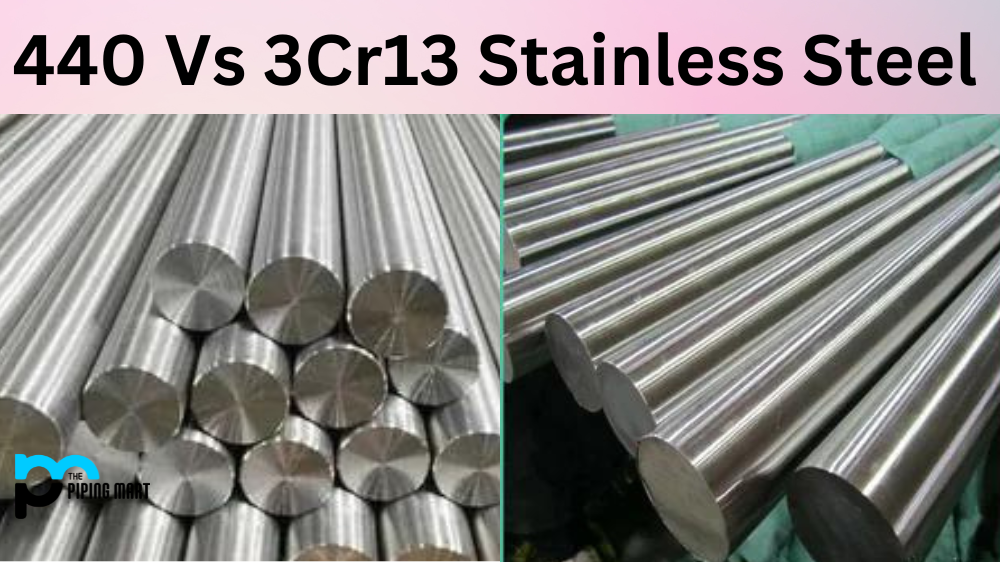The world of stainless Steel can seem daunting to the uninitiated. With so many different types, alloys, and grades, it can take time to know which is best for your application. In this blog post, we’ll cover two more common stainless steel alloys—440C and 3Cr13—and compare them side-by-side. Read on to find out which one might be right for you!
What is 440C Stainless Steel?
440C Stainless Steel is a high-carbon martensitic stainless steel often used in knife blades. It contains a carbon content of 0.95-1.2%, making it extremely strong and heat treatable. Its superior hardness makes it ideal for edge-retention applications, such as cutlery or surgical instruments. It also has excellent corrosion and wear resistance, making it well-suited for outdoor applications where it will be exposed to moisture or salt water.
What Is 3Cr13 Stainless Steel?
3Cr13 stainless Steel is another type of martensitic stainless Steel that contains 0.3% carbon content—which makes it slightly less strong than 440C—and 13% chromium content, which gives it good corrosion resistance compared to other steels. Additionally, its relatively low cost makes 3Cr13 an attractive material for budget-conscious projects that don’t require the strength or heat treatment capabilities of 440C stainless Steel but still need good corrosion resistance properties.
Difference Between 440 and 3Cr13 Stainless Steel
In terms of strength, 440C definitely has the edge over 3Cr13 due to its higher carbon content; however, it does come at a premium price point due to its superior hardness and heat treatment capabilities. On the other hand, 3Cr13 is significantly cheaper than 440C but still offers good corrosion resistance and wear resistance properties at a fraction of the cost. Ultimately, choosing between these two materials comes down to what you need from your application; if you need something powerful with excellent edge retention, then 440C may be your best bet, while if you are looking for something more affordable with decent corrosion resistance properties, then 3Cr13 may be a better option for you.
Composition
The main difference between 440 and 3Cr13 stainless Steel is their composition. 440 stainless Steel contains more chromium, while 3Cr13 stainless Steel contains more carbon.
Properties
As a result of their different compositions, 440 and 3Cr13 stainless Steel have different properties. 440 stainless Steel is more corrosion resistant, while 3Cr13 stainless Steel is harder and stronger.
Uses
440 and 3Cr13 stainless Steel are both used in a variety of applications. 440 stainless steel is often used in knives and other cutting tools, while 3Cr13 stainless Steel is often used in construction and other applications where strength is important.
Cost
Another difference between 440 and 3Cr13 stainless Steel is their cost. 440 stainless steel is typically more expensive than 3Cr13 stainless Steel.
Availability
Finally, another difference between 440 and 3Cr13 stainless Steel is their availability. 440 stainless steel is widely available, while 3Cr13 stainless Steel can be more difficult to find.
Conclusion:
When choosing between different grades of stainless Steel, there are many factors to consider. When weighing up options such as 440C vs 3cr13 stainless Steel, view their respective strengths and weaknesses; what benefits do they offer for your application? Do you require superior strength or just general corrosion resistance? By understanding how each grade differs in terms of performance characteristics and cost points, you can decide which material will suit your needs best! Hopefully, this guide has given you an overview of both grades so you can make the best choice possible when selecting a stainless steel alloy!

A passionate metal industry expert and blogger. With over 5 years of experience in the field, Palak brings a wealth of knowledge and insight to her writing. Whether discussing the latest trends in the metal industry or sharing tips, she is dedicated to helping others succeed in the metal industry.




